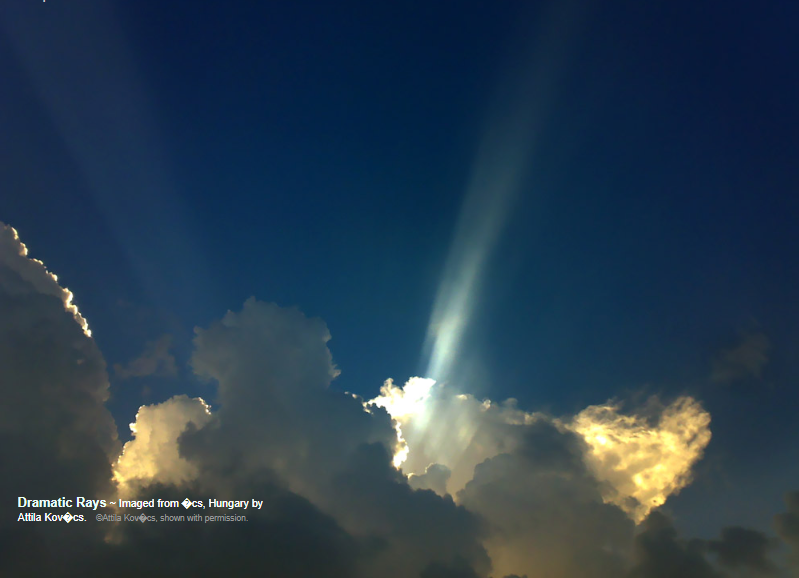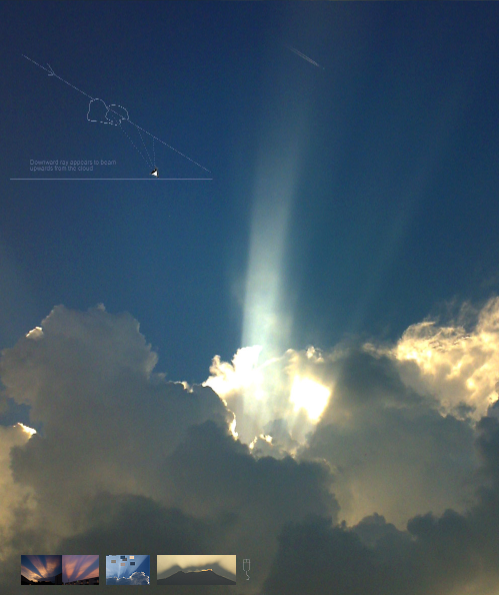OPOD - Rays
OPOD - Rays: A Spectacular Atmospheric Phenomenon
Have you ever looked up at the sky and been captivated by the mesmerizing sight of rays of light streaming through the clouds? This enchanting phenomenon, known as "rays," is a captivating display of atmospheric optics. Rays are visible beams of sunlight that appear to radiate from a single point in the sky, creating a stunning visual effect. In this article, we will explore the science behind rays, their formation, and the various types of rays that can be observed.
The Science Behind Rays
Rays are formed when sunlight interacts with particles suspended in the Earth's atmosphere. These particles can include dust, water droplets, ice crystals, or even air molecules. As sunlight passes through the atmosphere, it scatters off these particles, creating a diffusion of light. This scattering effect is responsible for the formation of rays.
Formation of Rays
The formation of rays is closely tied to the presence of clouds or other atmospheric obstructions. When sunlight passes through gaps or breaks in the cloud cover, it creates distinct beams of light that appear to converge at a central point. This convergence is an optical illusion caused by the perspective from which we observe the rays. In reality, the rays are parallel to each other but appear to converge due to our viewing angle.
Types of Rays
There are several types of rays that can be observed in the sky, each with its own unique characteristics:
-
Crepuscular Rays: These rays are perhaps the most well-known type. They are often seen during sunrise or sunset when the sun is low on the horizon. Crepuscular rays appear as distinct beams of light that fan out from behind clouds or other obstructions.
-
Anticrepuscular Rays: These rays are similar to crepuscular rays but appear on the opposite side of the sky. They are visible when the sun is below the horizon, and the rays extend upwards from the horizon towards the observer.
-
Cloud Shadows: Although not technically rays, cloud shadows can create a similar visual effect. When sunlight passes through gaps in the clouds, it casts shadows on the lower layers of the atmosphere, creating dark streaks or bands that resemble rays.
-
Glory: A glory is a circular optical phenomenon that appears as a series of colored rings centered around the observer's shadow. It is often observed when looking down from an aircraft or mountain peak onto a layer of clouds or mist.
Factors Affecting Ray Visibility
The visibility of rays can be influenced by several factors:
- Cloud Cover: Rays are most commonly observed when there are breaks or gaps in the cloud cover, allowing sunlight to pass through.
- Atmospheric Conditions: The presence of certain atmospheric particles, such as dust or moisture, can enhance the scattering of light and make rays more visible.
- Viewing Angle: The angle at which we observe the rays plays a significant role in their visibility. Rays are most pronounced when viewed from a position where they appear to converge.
Capturing the Beauty of Rays
Photographing rays can be a rewarding experience for both amateur and professional photographers. To capture the beauty of rays, it is essential to consider the following tips:
- Timing: The best time to photograph rays is during sunrise or sunset when the sun is low on the horizon, creating more pronounced and dramatic beams of light.
- Composition: Consider incorporating other elements such as clouds, landscapes, or structures to add depth and interest to your photographs.
- Exposure: Experiment with different exposure settings to capture the contrast between the bright rays and the surrounding sky or landscape.
Conclusion
Rays are a captivating atmospheric phenomenon that never fails to inspire awe and wonder. Understanding the science behind their formation and the different types of rays allows us to appreciate their beauty even more. Whether you witness them in person or capture them through photography, rays offer a glimpse into the mesmerizing interplay between sunlight and our atmosphere. So next time you find yourself gazing at the sky, keep an eye out for these ethereal beams of light that add a touch of magic to our world.

Dramatic Rays ~ Imaged from �cs, Hungary by Attila Kov�cs. ©Attila Kov�cs, shown with permission.

Note: this article has been automatically converted from the old site and may not appear as intended. You can find the original article here.
Reference Atmospheric Optics
If you use any of the definitions, information, or data presented on Atmospheric Optics, please copy the link or reference below to properly credit us as the reference source. Thank you!
-
<a href="https://atoptics.co.uk/blog/opod-rays/">OPOD - Rays</a>
-
"OPOD - Rays". Atmospheric Optics. Accessed on November 12, 2024. https://atoptics.co.uk/blog/opod-rays/.
-
"OPOD - Rays". Atmospheric Optics, https://atoptics.co.uk/blog/opod-rays/. Accessed 12 November, 2024
-
OPOD - Rays. Atmospheric Optics. Retrieved from https://atoptics.co.uk/blog/opod-rays/.